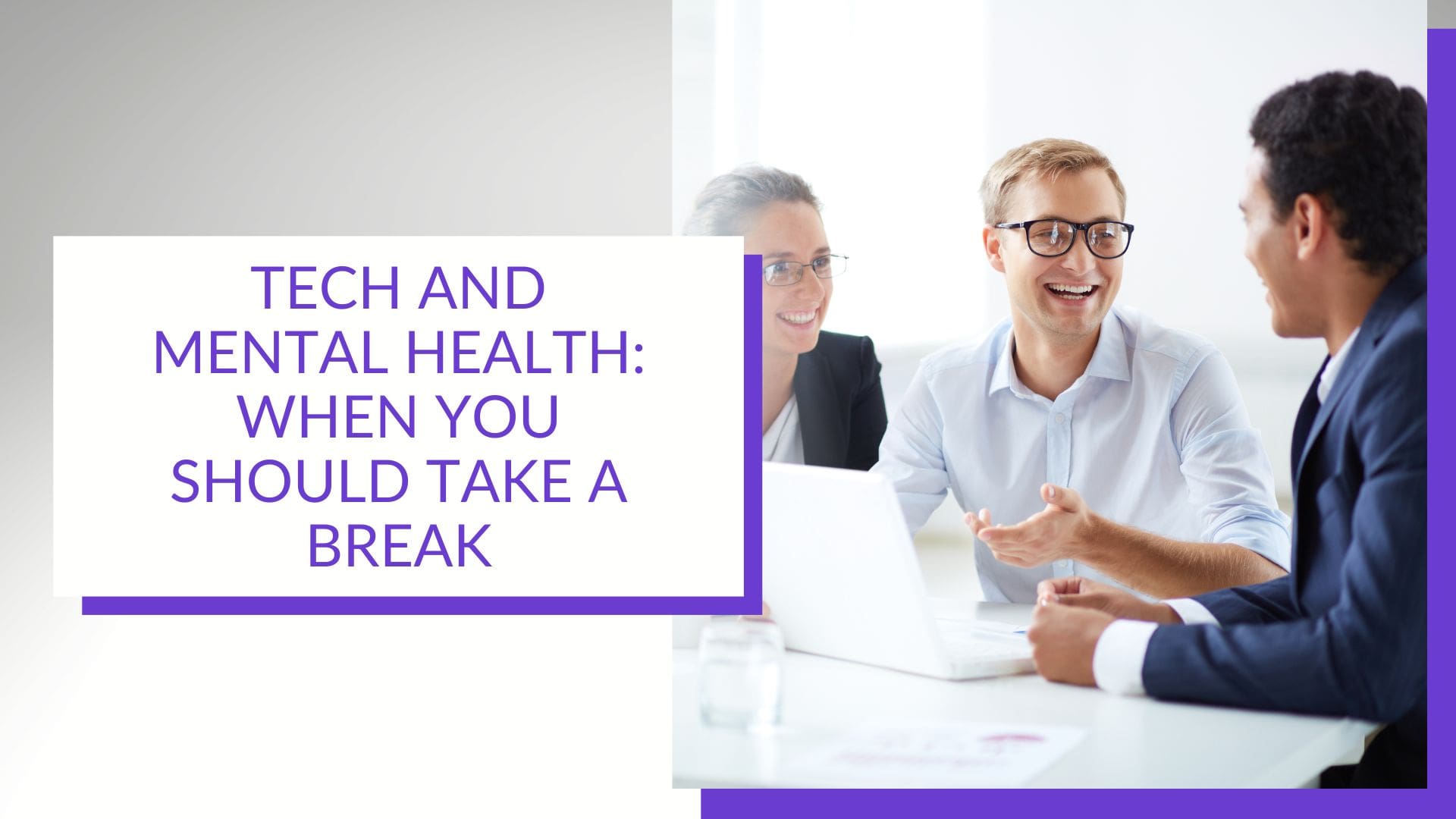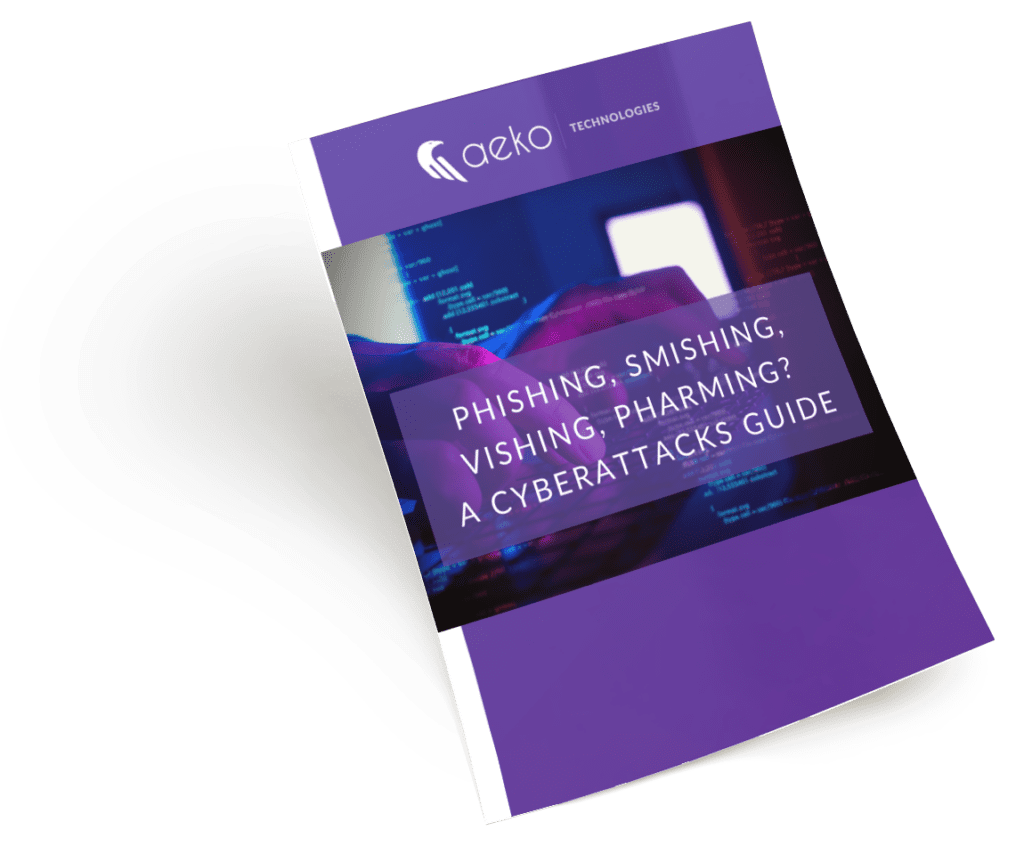The relationship between tech and mental health is complicated, with the tech we use shaping our mental well-being both positively and negatively. While technology has undeniably enhanced productivity and connectivity, it has also ushered in challenges that can negatively impact mental health.
As a trusted managed service provider, we recognize the importance of addressing these challenges and fostering a healthier balance between technology and mental well-being.
Let’s explore how tech at the workplace can negatively impact your mental health and the steps you can take to positively improve it.
“Techno Stress” and the Workplace
In 1984, Craig Brod coined the phrase “techno stress” for the first time in his book “Techno Stress: The Human Cost of the Computer Revolution,” describing how a digital, computerized workplace negatively impacts workers and alters their attitudes and well-being considerably.
In today’s post-pandemic world, people tend to do work-related tasks and processes on their computers for hours on end, with nearly all interactions on their computers or smart devices. For remote workers, the strain is more heightened as they are often cut off from the social connections typically found in traditional in-office workplaces.
Unchecked, techno stress leads to certain tech and mental health issues such as trouble concentrating and poor decision-making, as well as behavioral changes causing low initiative and energy.
The bottom line is, over time, these effects diminish employee performance and productivity. A simple mistake of sharing credentials with the wrong person can result in a huge cyber security breach.
Managers and HR leaders need to take a closer look at the impact of technology on employee health and well-being, and how tech disruptions in the workplace drive workplace stress. Organizations need to adopt some key strategies to ensure tech advancements can thrive without constricting their team’s well-being.
Encouraging Productivity With Recharging Breaks
One key aspect of maintaining a healthy tech-work balance is the encouragement of recharging breaks. Striking the right balance between work and relaxation is essential for sustained productivity.
Pro tip: Include regular breaks throughout the workday, allowing employees to recharge and return to their tasks with renewed focus.
Tech and Mental Health: Enforcing Boundaries at the Workplace
As technology seamlessly integrates into our work lives, setting boundaries becomes crucial. We understand the need for tools that not only enhance productivity but also help build healthy work habits.
The unhealthy need to be “always on” is one of the major drivers of work-related techno stress. The increased accessibility we have to our devices often means that work-related messages can be sent at any time and from anywhere.
Encourage your team to disconnect after work hours or during breaks, to help them maintain a healthy work-life balance.
For remote workers in the cloud, encourage a clear work period, within which work-related interactions are allowed to go on, and avoid sending work-related messages outside these hours.
Don’t expect coworkers to respond to these messages outside those hours. If your employees have a flexible work period, encourage them to have a fixed sign-off time, after which they won’t respond to work-related messages.
But what can be done from a tech perspective?
The Microsoft Viva Insights app, for instance, empowers users to schedule breaks or designate up to four hours of uninterrupted focus time each day.
Similarly, both Google Workspace and Microsoft Outlook provide built-in break options by shortening meeting durations, promoting a more balanced work schedule.
Tips for Enforcing Boundaries
However, scheduling breaks alone might not be enough to fully disconnect from work, especially when constant notifications beckon. Here are several strategies to tackle this issue with platform tools:
- Slack’s do not disturb option pauses incoming notifications for a specified time or sets a schedule to ensure uninterrupted personal time.
- Apple Focus feature mutes notifications from all apps for a set duration, syncing seamlessly across devices.
- Windows do not disturb feature activates automatically when using an app in full-screen mode, providing a distraction-free environment.
- Microsoft Viva Insights’ quiet-time settings can be customized to mute notifications from Outlook and Teams, fostering a more peaceful work environment.
Cultivating a Mentally Healthy Workplace
Enforcing boundaries and taking strategic breaks are crucial steps to ensuring your team’s tech and mental health are aligned positively. By implementing these tips and leveraging the right tools, individuals can enhance their overall well-being in the digital workplace.
If you’re curious about diving deeper into creating a tech-friendly, mentally enriching work environment, book a quick consultation with us today for valuable insights that can transform your workplace experience.
Are you aware of the most common cyberattack methods?
Did you know there are over 3.4 billion phishing emails sent every day? Phishing and other cybercriminal behavior are a lot more common than you’d think.
Our free “Phishing, Smishing, Vishing, Pharming? A Cyberattacks Guide” will inform you about cyberattack methods and give you the latest in data security tips.


